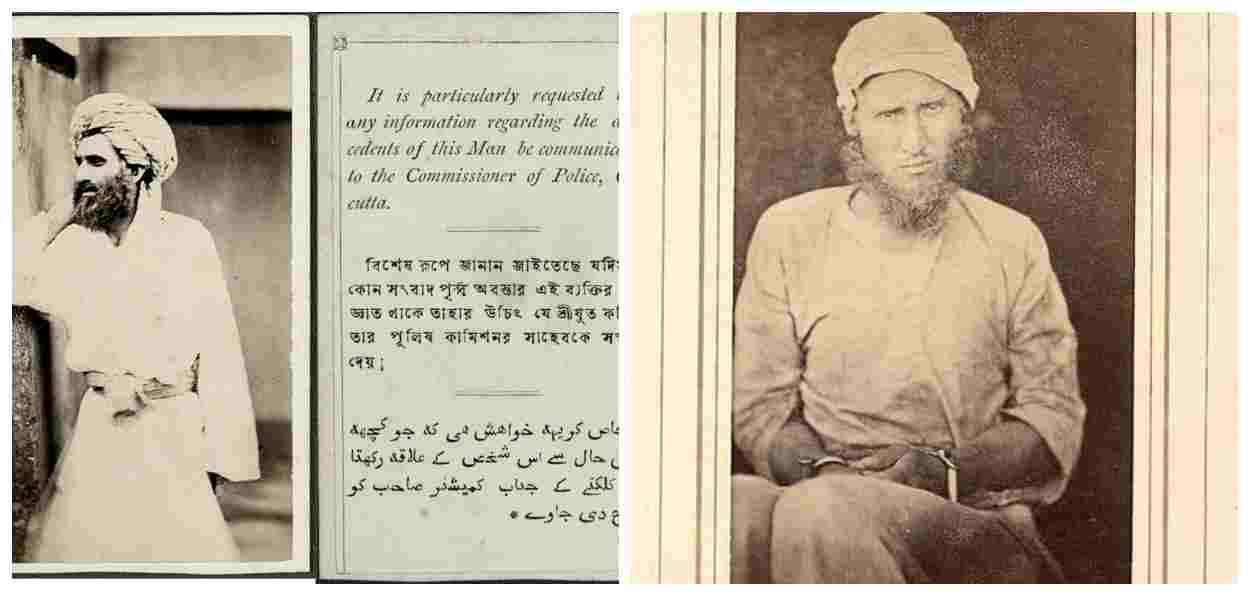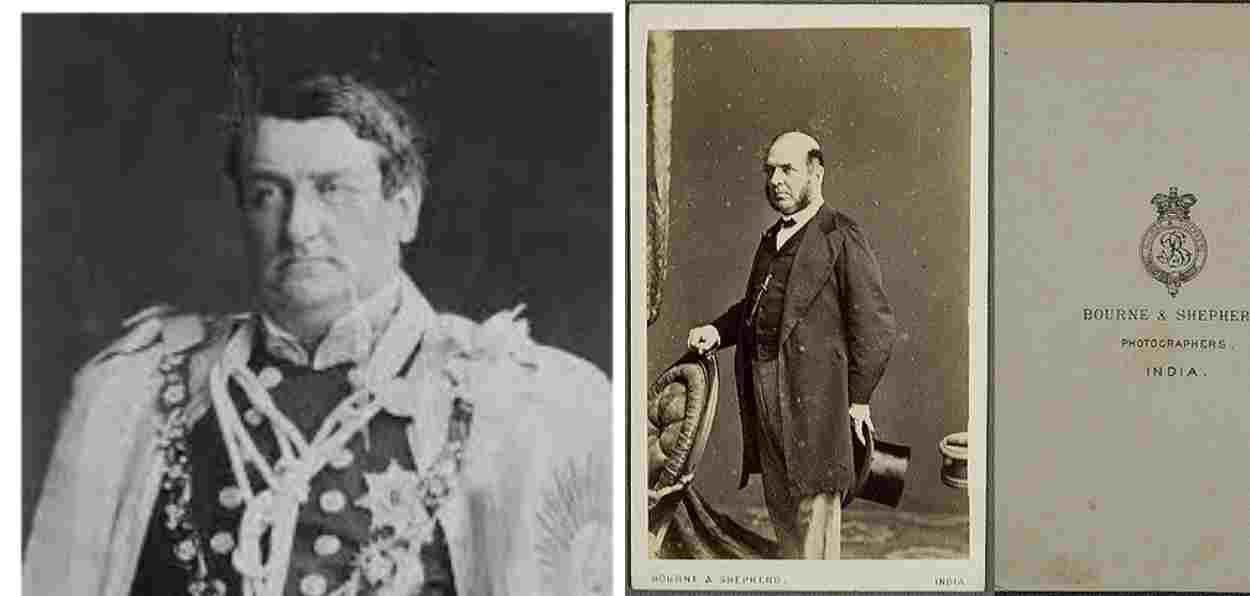
Saquib Salim
While writing about the early social and political influences of his life, Bipin Chandra Pal credited the trial of Amir Khan in 1869-70 as the most important event.
Bipin Chandra Pal wrote, “Amir Khan, was arrested, and detained under Regulation III of 1818. An application was made for a writ of habeas corpus to the Calcutta High Court which was heard by Chief Justice Norman. That application was rejected: Mr. Annesty of the Bombay High Court Bar was engaged on behalf of Amir Khan. Mr. Annesty’s speech in which he hauled Lord Mayo over the coals for what was described as his tyranny over the helpless subjects of Her Majesty in India was published in pamphlet forms along with the proceedings of this case. These pamphlets were for many years something like the scripture of our new patriotism.”
Who was Amir Khan? Certainly, he has been absent from our history textbooks and could not secure a place in the public memory. Yet, a revolutionary leader no less than Bipin Chandra Pal pays rich tribute to him as one of the factors in his evolution as a nationalist.
Manmath Nath Gupta, a revolutionary who was convicted for the Kakori conspiracy case, credited the Amir Khan trial and its fallout as ‘the harbinger’ of the later revolutionary movement in Bengal.
Then who was this Amir Khan about whom even professional historians do not have much idea?
In the summers of 1857, Indians tried to uproot British colonial rule at a scale never seen before. Rajas, Nawabs, peasants, sepoys and even tawaifs joined hands to fight the foreign rulers. If it wasn’t for Indian collaborators, India would have been free in 1857.
The British army succeeded in saving the colonial empire but it could not defeat the Indian resilience. Within a few months, Indians gathered themselves to fight again. Vasudev Balwant Phadke led the armies in Maharashtra and Telangana, peasants took on indigo planters in Bengal and Bihar, and Wahabis (a generic term for Muslim revolutionaries of that time) gathered tribes of North West Frontier Province and Afghanistan.
 Lord Mayo and Justice Paxton Norman (R)
Lord Mayo and Justice Paxton Norman (R)
The British government dealt with an iron hand with Wahabis. Several leaders were arrested and sent to the Andamans. Still, the movement could not be suppressed. It took almost a decade for the British police to reach Amir Khan (or, Ameer Khan). A rich merchant of hides, Amir Khan was arrested on 10 July 1869 from his residence in Kolkata. Hashmahad Khan, another merchant, was arrested two days later.
Amir Khan was charged with providing funds for revolutionary activities against the British army. The order to arrest him came directly from the Governor General Lord Mayo.
Amir saw an opportunity in this arrest to publicise the nationalist message among the Indians as well as the global audience. He hired the costliest European lawyers in India, Anstey, Ingram, and Evans. With the help of his lawyers, he moved to the court to get Habeas Corpus issued and challenged his arrest without charges.
One of the important arguments was that after the crown had overtaken the political power of India, the citizens of India would become British subjects and therefore should enjoy equal rights before the law. The case was heard by Justice Paxton Norman, who was officiating as Chief Justice of the Calcutta High Court.
During the trial in court, Justice Norman pointed out that the British did not give equal rights to the Indians. He said, “The argument is fallacious, which is based on the assumption that all the laws which are in force in England are also law here.” He went on to note, “If slavery could exist, why could not a law like Regulation III. of 1818, for the confinement of seditious persons, exist also? It is much less repugnant to English law than slavery. Englishmen and Native subjects never were on an equal footing.”
The court denied relief and the arguments by the lawyers of Amir Khan were published in the form of pamphlets to be distributed across India. These lawyers wrote articles in several English newspapers in England as well to publicise the trial and injustice meted out to the Indians. In a pamphlet, his lawyers wrote, “Lord Mayo and his Council have destroyed all personal liberty throughout the whole of India, without distinction of blood, language, or nationality.”
Bipin Chandra Pal later recalled that these pamphlets were Bibles of the Indian nationalists in his youth.
The impact was more severe. Within a few months Justice Norman was assassinated by Abdullah and after that Lord Mayo was also killed by Sher Ali at the Andamans. Lord Mayo was the only British Governor General to have been assassinated.
James Wilson, editor of the Indian Daily News, wrote, “The rule of Lord Mayo…became exceedingly oppressive to the people, and led to the disaffection of the most serious and dangerous character throughout the country. This disaffection was not confined to any class. It was felt by all... The Hindoos became restless and sullen, the Mahomedans partook of the feeling, and only needed a special provocation to excite them to the activity of that fanatical order which is dangerous from the uncertainty and determined character of its action. That provocation was given by Lord Mayo in the prosecution of Ameer Khan, Hashmadad Khan, and others, in a way that was condemned by all Englishmen as being opposed to all English ideas of right and justice…. But that it led to the death of Mr. Norman and Lord Mayo is to the writer's mind a fact beyond doubt.”
On 20 September 1871, Abdullah stabbed Justice Norman on the stairs of the High Court in Kolkata. The Illustrated London News reported, “It seems to be the fact, however, that the motive of this crime was mixed with private vengeance, since Ameer Khan, the chief person engaged in it, had been detained in custody, under Mr. Justice Norman's warrant, upon a charge of treason and conspiracy at Patna, and a motion by counsel for his release was negatived by the decision of this Judge.”
A few months later, on 8 February 1872, Lord Mayo was killed in the Andamans by Sher Ali. Bipin Chandra Pal recalled, “The assassination of Justice Norman was followed by that of Lord Mayo in the Andamans by a prisoner, named Sher Ali. These two assassinations were believed to be the reprisals of the adherents of the Wahabi leader (Amir Khan) for his life imprisonment. The Wahabi trial, however, helped to strengthen our infant patriotic sentiment by a new sense of wrong against our British masters.”
Manmath Nath Gupta notes the importance of the Amir Khan trial as, “Amir Khan, was detained in 1871 under Regulation III of 1818. The Wahabis engaged an eminent English Barrister, Mr. Anesty of Bombay, and took him to Calcutta to file an appeal against the detention. He contended that if Amir Khan was guilty, the matter should be openly adjudged in a court of law. He also referred to the reign of terror in the days of Lord Mayo. His arguments were purely political. The Wahabis published his arguments in book form and distributed it.
ALSO READ: Kashmir village that takes prides in its record crops, natural childbirths
The appeal was heard by Justice Norman and despite the efficient handling by Mr. Anesty, the appeal was dismissed. The Wahabis did not take the judgment lying down, and a Wahabi named Abdullah stabbed Justice Norman, who succumbed to the injuries. Abdullah was sentenced to death and the furious English officers cremated him after execution instead of burying him according to Muslim rites. This sacrilege enraged the Wahabis further. Subsequently when Lord Mayo was on a visit to the Andamans on February 8, 1872, a Wahabi called Sher Ali assassinated him there. But in the textbooks of history, Sher Ali is described as an ordinary convict. Abdullah and Sher Ali were the harbingers of the terrorist movement in India."
